INTERVIEW
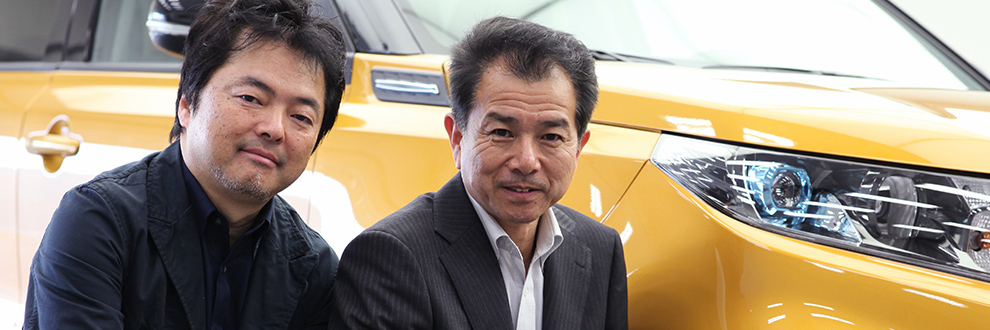
Your Career and Its Relationship to the Vitara
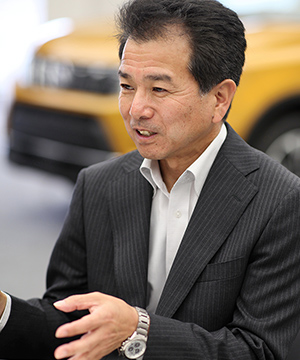
What sort of positioning are you aiming for in developing the Vitara?
Yonezawa - I started my career in engine design. After serving as an advisor to the manager with general responsibility for commercial vehicle development, I started working on electrified vehicles in 2009. After studying widely and gaining well-rounded experience creating a wide range of vehicle types, I was appointed chief engineer on the Vitara project in 2013. So I was entrusted with developing the fourth generation of the Vitara.
My first encounter with the 1st generation Vitara was during training on a proving grounds. The Vitara was under development and a prototype was being tested. Back then the term ‘SUV’ hadn’t been coined yet; the phrase we used was ‘off-road vehicle.’The big tires and the straight lines of the blister fender were striking. I remember being deeply impressed, thinking, ‘So this is what an “off-road vehicle” is.’
Now it’s 25 years later, I’m responsible for the entire Vitara series, and it’s common for people to use full-fledged SUVs as passenger cars. We’ve made a lot of changes in the fourth-generation Vitara: The drive system was changed from FR base 4WD to FF base 4WD, and we’ve discontinued the sub transmission for a lower gear driving. While we introduced the recent market trend as ‘modern SUVs’, we felt that the Vitara should offer much more compelling off-road performance than other SUVs, so we developed the fourth-generation Vitara with particular attention to 4WD performance.
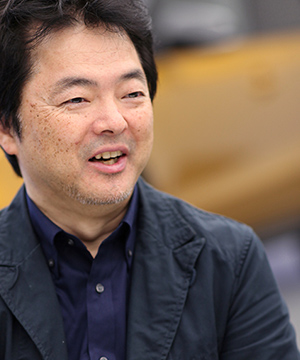
What directions are you pursuing in exterior design development?
Arai - I joined Suzuki at about the same time as Yonezawa did and I’ve been with the Vitara history ever since. I’ve been involved with the Vitara since 2000, working on the designs for the third and fourth generations.
The design of the first generation was all about straight lines. The second generation was physically larger than the first and gave a massive impression. The design was of a quite different nature. In the third and fourth generations of the Vitara, we retained the clean, orderly lines of the first and added a clearly delineated front, marking a clear departure from the meandering and complicated lines seen on many recent SUVs. As I proceeded with the design I always bore in mind the Vitara’s image as a tough SUV.
Because the lion’s share of sales was in Europe, we shifted production base to Europe and incorporated a number of features catering to European tastes into the design.
Development of the 4th-generation Vitara
Arai As Yonezawa mentioned, our design work was always guided by an awareness of the Vitara’s character as a 4WD vehicle. We took particular care in selecting the devices used to activate various systems, and that attention to detail shows in even the most subtle design elements. For example, to impart to the driver the real thrill of 4WD, we adopted All Grip, enabling the driver to select the driving mode. We created an appealing design that gave that switch a real presence on the instrument panel.
Yonezawa - And it’s not just the Vitara. We make sure that all of the cars we’ve been manufacturing for a long time have design points that are iconic. People can tell at a glance and say, ‘Aha, that’s a Vitara!’ That iconicity involves the summation of a wide variety of details. The combination of compact size with the silhouette of an SUV, the basic flatness of the bonnet and so on, are all part of the effect.
Arai - Even when we switched the drive system to, FF base 4WD, we were firm in our minds that we wanted to sell it as a Vitara.
What else is new in the new Vitara? Where have you been focusing your efforts the most?
Yonezawa - Naturally we’re strengthening the incorporation of state-of-the-art technology. That means features such as pre-collision brakes and adaptive cruise control. Among the minor changes are the addition of Blind Spot Monitor (BSM), Rear Cross Traffic Alert (RCTA) and Traffic Sign Recognition (TSR). In functional terms, we’ve enhanced 4WD performance with features such as strengthened traction control when pulling out of mud or a diagonally stuck situation (for example, when the front right and rear left wheels are unable to transmit drive force to the ground). Also, the Vitara is the first Suzuki vehicle to incorporate direct-injection turbo. We conducted field tests repeatedly in Europe till driving stability was honed to our satisfaction.
Another thing we work hard to achieve is that customers can personalise their car to their own preferences. From the start we incorporated design elements such as boundary lines that accent the two-tone colour scheme. We considered and adopted a certain direction on a variety of accessories, right from the planning stage.
Vitara: The Road Ahead
How do you expect the Vitara to evolve going forward? Feel free to give us your own personal opinions.
Yonezawa - I expect the Vitara to continue to be a compact vehicle while retaining the maneuverability of an SUV, with a suspension system that lets you drive the way you want to. The seat position and lines of sight will always be higher than that of a sedan, so the view will always be great. Its body will look big but when you get behind the wheel it has incredible maneuverability .
What the Vitara will never be, or forgive, is an SUV that sells on its looks alone. The Vitara must always provide added value, not only in the exterior design but in 4WD performance as well.
In Europe people do a lot of highway driving. Even on country roads, speeds of 100km/h are not unusual. We draw a clear line between the Vitara and professional 4WDs, with a body that can withstand high-speed driving and suspension that accentuates the 4WD performance.
A compact, maneuverable and responsive SUV. That’s the Vitara package and that’s the road that lies ahead of us.
The profile of Chief Engineer and Chief Designer
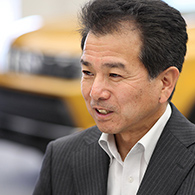
Hiroyuki Yonezawa,
Chief Engineer
Hiroyuki Yonezawa joined Suzuki in 1987. After starting in engine design, Yonezawa looked after development of commercial vehicles and electrified vehicles before being appointed chief engineer for the Vitara in 2013. In 2016 he became chief engineer for the Jimny in addition to his existing post on the Vitara project.
In his private life, Yonezawa is an active fellow. He enjoys watching spectator sports and playing golf. Every year he makes a point of participating in the Hamamatsu Festival, held in Hamamatsu, Shizuoka Prefecture, which is both his hometown and the headquarters of Suzuki Motor Corporation.
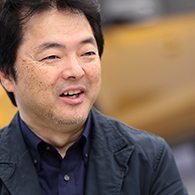
Takehito Arai,
Designer
Takehito Arai joined Suzuki in 1987. After beginning in design work on mini vehicles such as the Alto and the Carry/Every, around 2000 he was placed in charge of design for SUVs, including the Vitara, and remains so to this day.
In his private life, Arai’s hobby is cooking. His own preference in cars is for compact models, whether foreign or domestic. He recently refurbished the Suzuki Twin he has been driving for 15 years, completely refurbishing it. He is a designer who loves small cars both at work and at play.




